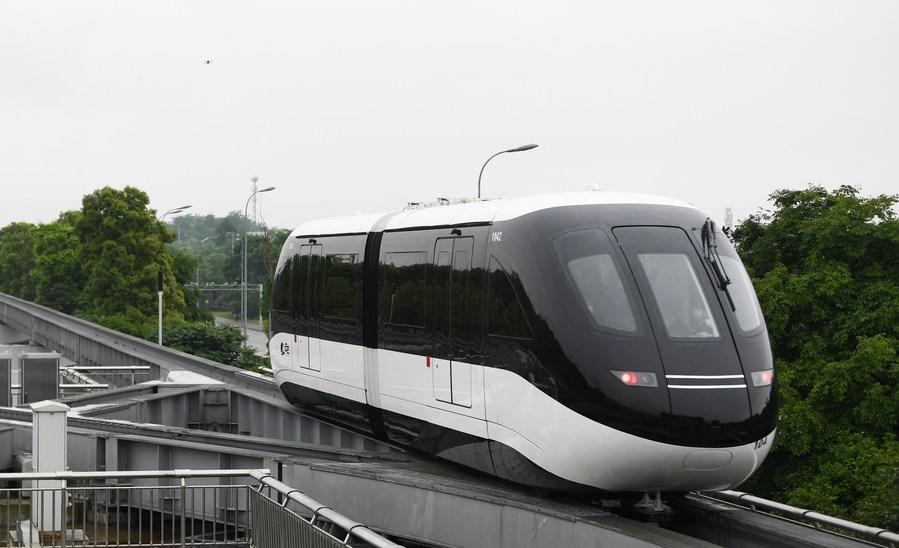
Photo taken on April 16, 2021 shows a SkyShuttle running on rails in Bishan District, southwest China's Chongqing Municipality. (Xinhua/Wang Quanchao)
BEIJING, June 23 (Xinhua) -- As major project construction accelerates against the backdrop of stable epidemic control situation and economic recovery, infrastructure investment and industrial investment in China are expected to continue rising in the second half of the year, according to Liao Qun, chief economist with the Chongyang Institute for Financial Studies of Renmin University of China.
Many provinces are quickening major project construction as the end of the second quarter approaches.
For example, central China's Hunan Province on Monday kicked off 1,366 major projects with a total investment value of 571 billion yuan, including 218 infrastructure projects and 864 industrial development ones.
On June 19, east China's Anhui Province launched the sixth batch of 207 projects with a combined investment of 104.14 billion yuan, covering such fields as strategic emerging industries and upgrading of traditional industries.
Manufacturing investment stands out as a focus of local investment. According to data released by the National Bureau of Statistics (NBS) last Wednesday, manufacturing investment in China jumped 20.4 percent year on year, five percentage points higher than the growth of overall investment.
The increase in manufacturing investment was mainly driven by recuperating international market demand, which led to a significant improvement in corporate profits, coupled with the low comparative base last year, according to Luo Huanjie, senior researcher with Zhixin Investment Research Institute.
Manufacturing investment is expected to usher in a more sustained recovery in the second half, stated Cheng Qiang, macro-economy analyst with CITIC Securities.
In addition to industrial investment, infrastructure investment is also a priority of local investment. Many places have rolled out investment plans for major infrastructure projects concerning rail transportation, airports and transport hubs.
For instance, southwest China's Chengdu and Chongqing will strive to make the operating mileage of rail transit in the city cluster to reach more than 10,000 kilometers, of which 9,000 kilometers will be railway network, according to a transportation development plan for the Chengdu-Chongqing city cluster made public earlier this month.
South China's Guangxi vows to establish a comprehensive transportation network and make a dedicated investment of 1.5 trillion yuan from 2021 to 2025, while Zhejiang Province in east China will invest 2 trillion yuan in transportation to basically make neighboring provinces, major cities and areas within reach in 1 hour or less during the 2021-2025 period.
China's fixed-asset investment, which includes capital spent on infrastructure, property, machinery and other physical assets, went up 15.4 percent year on year in the first five months of this year, data from the NBS showed. (Edited by Su Dan with Xinhua Silk Road, sudan@xinhua.org)




 A single purchase
A single purchase









